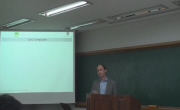Friction stir extrusion is one of the most promising solid-state chip recycling techniques because of its relative simplicity and high efficiency. One of the most straightforward applications for the process is the production of recycled wires to be u...
http://chineseinput.net/에서 pinyin(병음)방식으로 중국어를 변환할 수 있습니다.
변환된 중국어를 복사하여 사용하시면 됩니다.
- 中文 을 입력하시려면 zhongwen을 입력하시고 space를누르시면됩니다.
- 北京 을 입력하시려면 beijing을 입력하시고 space를 누르시면 됩니다.



Improving the Industrial Efficiency of Recycling Aluminum Alloy Chips Using Friction Stir Extrusion: Thin Wires Production Process
한글로보기https://www.riss.kr/link?id=A109165615
-
저자
Gianluca Buffa (University of Palermo) ; Davide Campanella (University of Palermo) ; Muhammad Adnan (University of Palermo) ; Umberto La Commare (University of Palermo) ; Giuseppe Ingarao (University of Palermo) ; Livan Fratini (University of Palermo)
- 발행기관
- 학술지명
- 권호사항
-
발행연도
2024
-
작성언어
English
- 주제어
-
등재정보
KCI등재,SCIE,SCOPUS
-
자료형태
학술저널
-
수록면
1133-1146(14쪽)
- DOI식별코드
- 제공처
-
0
상세조회 -
0
다운로드
부가정보
다국어 초록 (Multilingual Abstract)
Friction stir extrusion is one of the most promising solid-state chip recycling techniques because of its relative simplicity and high efficiency. One of the most straightforward applications for the process is the production of recycled wires to be utilized as filler material in welding or welding-based additive manufacturing processes, in order to create an industrial symbiosis link, fostering a circular economy and enhancing the technology readiness level of the process. The scalability of the process to the thin wires needed for such applications has not been investigated so far. In this paper, an experimental and numerical analysis was developed. A dedicated numerical model was first validated and then used to design the tool geometry. The effect of tool rotation and tool force on both “standard” mechanical properties, as Ultimate Tensile Strength and microhardness, and specific properties for the envisaged application, as the wrapping around reels with different radii, was investigated. The numerical model results were used to explain the influence of the process parameters on the material flow as well as on the distribution of the primary field variables, namely temperature, strain, and strain rate. Finally, the energy demand was measured, and the specific energy consumption (SEC) was evaluated. It was found that a conical shoulder surface favors the conditions for effective solid bonding. Low values of the extrusion force have detrimental effects on the wires properties as they result either in insufficient strain, or hot cracking defects. High values of extrusion force results in lower SEC, unlocking the potential of the process as symbiotic link enabler.
동일학술지(권/호) 다른 논문
-
Multi-objective Optimization Strategy for Continuous Drilling Parameters of Superalloys
- 한국정밀공학회
- Qi Wang
- 2024
- KCI등재,SCIE,SCOPUS
-
- 한국정밀공학회
- Jiyoon Shin
- 2024
- KCI등재,SCIE,SCOPUS
-
- 한국정밀공학회
- Haipeng Huang
- 2024
- KCI등재,SCIE,SCOPUS
-
- 한국정밀공학회
- Sanghun Lee
- 2024
- KCI등재,SCIE,SCOPUS




 KCI
KCI






